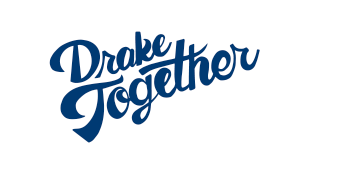Skip Sub Menu
Proposal Development
After developing your idea and matching it with a funding opportunity, you can begin crafting your proposal. Read the instructions in the posting, or request for proposals (RFP), carefully to be aware of all required components and formatting guidelines.
- Letter of Inquiry/Interest Elements
Some funders require applicants to submit a letter of inquiry or a letter of interest before the full proposal. A typical LOI is approximately two pages and contains an overview of the proposed project. This document contains the common elements in an LOI. - Proposal Outline Sample
Begin the full proposal by outlining your project. The Proposal Outline Sample provides a guide for identifying the elements in your proposal and organizing the sections. Once the outline is established, you can begin writing the sections. - Proposal Routing Form
This is an internal form that Drake requires for all proposals to ensure all necessary departments have reviewed the proposal and accepted the necessary assurances. - (this form is currently being updated-contact SPARC if needed)
Many RFPs include a checklist of the required components and attachments for a full proposal. This general proposal checklist can be used when an RFP does not include one.
Proposal Attachments
Many funders require additional attachments to a full proposal. These are a list of resources to help craft some of the most common attachments.
- Data Security/Management
The DMPTool provides a click through guide to create a management plan that meets funders' requirements. - Facilities and Equipment Resources Template
Some finders, particularly those with a science focus, will ask for a description of the facilities and equipment available for the proposed project. These documents should include a full description of the size of the space and the capabilities of the equipment. - Letter of Support Example
If your project involves working with another organization, funders may require a letter of support from a representative of that organization to show a commitment in the event the project is funded. This sample letter of support will help write the letter. - Logic Model
A logic model is a common method to visually reflect the research and evaluation process. This how-to guide helps create a logic model for your project. - NSF Biosketch Template
All National Science Foundation (NSF) proposals require a biosketch for each member of the project personnel. - NSF Collaborators and Affiliations Template
NSF also requires a Collaborators and Affiliations document for each project team member. This is a list of research collaborators, thesis and dissertation advisors and advisees, and the editorial board of recent publications. - NSF Current and Pending Support
All PIs and senior personnel on a National Science Foundation (NSF) grant application will need to submit a Current and Pending Support document. This is a list of your current and pending grant funding. Note: The grant project for which you are currently applying should also be listed on this form as "pending." - Program Evaluation Template
Funders want to know that their investment in your project will have an impact. The evaluation component should measure the input and outputs and reflect the progress toward achieving the project's stated goals and objectives. This sample sample is from the Centers for Disease Control (CDC) and reflects a thorough evaluation of a science research project. - Statement of Work Template
Federal proposals that include subawards to other institutions require a Scope of Work Statement. This template includes the necessary components of a Scope of Work Statement.
For assistance, contact the grants specialist.
Preston Miller
Senior Grants Specialist
515-271-2850
preston.miller@drake.edu
University Calendar 
December 10, 2024
November 20, 2024

